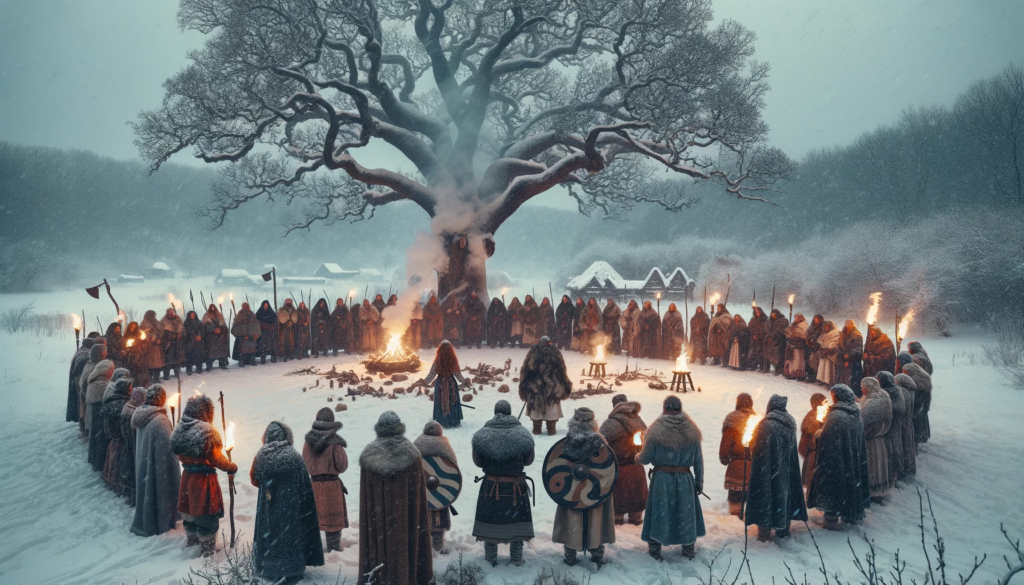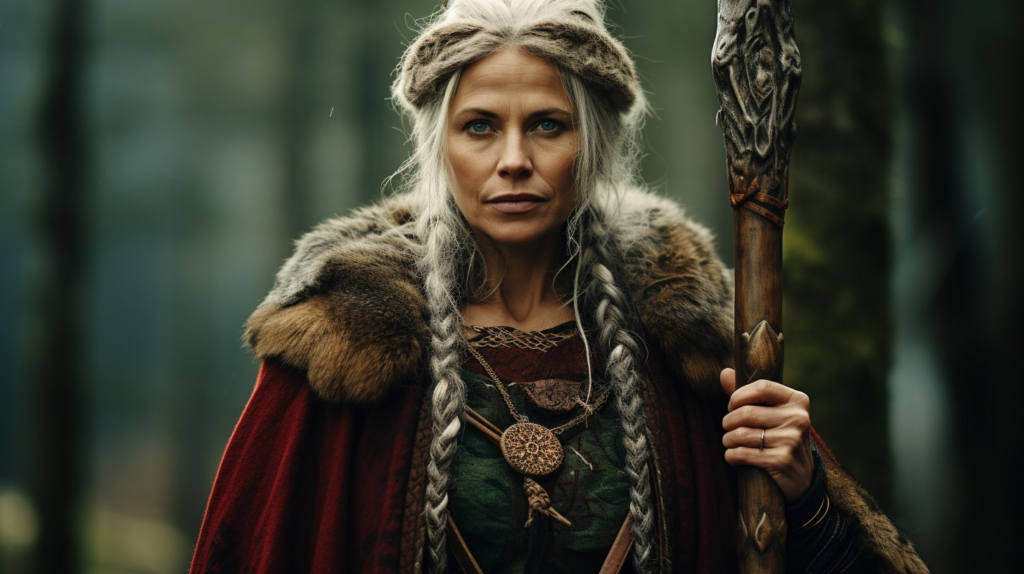Research on women during Viking times has long been neglected. When the concept of the Viking Age and Vikings was coined in the 19th century, women were completely ignored, relegated to the home. The story the Scandinavian historians wanted to tell was one of kings, conquest and glory. That women could have a part in this seemed, to them, unlikely.
Recent research has begun to take an interest in the viking women however, and the different role men and women played in society. Gender roles seem to have been strictly divided. In images from the Viking Age, the men are depicted with weapons, while the women’s symbol is usually keys. The woman wore the house keys in her belt as a status symbol, it showed that she had responsibility for the house, the coffers with valuable treasures, the thralls.

This doesn’t mean she didn’t have influence outside of the household. Viking Women participated in the warrior society, by playing an important role in religious rites for example. As I mentioned in an earlier post, the aristocracy usually worshiped Oden, and the chieftains played the part of Oden in rites, while his wife took on the part of Freyja – as we have seen before also a warrior Goddess.
The power of the Viking Age rulers was based on family ties and loyalties. In these, women played an equally important part. Even more, sometimes. There are examples where women married beneath their status, which was beneficial for both them and their spouses. By coming from a more powerful family, the woman became more equal in her marriage. And by marrying her, her husband got more influence in society.
One example is Knut (Canute) the Great. His power base in England was largely based on his marriage to Emma of Normandy. As previous queen consort, she had a lot of influence and connections, and her marriage to Knut legitimized his power.
Another is Harald Bluetooth’s mother, Tyra. Rune stones suggests that his father, Gorm, became king by marrying her. It was she who had the important ancestry and the important connections.

Besides this, viking women could be rulers in their own right. Female graves has until now largely been ignored – or assumed to be male – but more recent research has confirmed that women too has been buried with the same symbols of power and status as men – many of the graves containing the richest treasures that has been excavated in Scandinavia has turned out to be the graves of women.
In fact, in THE richest Viking Age grave ever found in the Nordic countries (the Oseberg Ship) two women were buried – one 80-year-old woman and one whose age has been estimated somewhere between 35-55. Historians believe that one of them was a very important person, a religious or worldly leader, and that the other were sacrificed to follow her in death. Which is which is not clear however.
But obviously, at least one of the women was a great leader, very respected and very rich. People wanted to honour her and show – in this world and the next – how important she was.
Another evidence that viking women could have political power and influence are the many rune stones erected or commissioned by women. Carved on these stones are stories of women who owned land and wealth, who travelled and who had political or religious influence in their community.

One role in Viking Age society that was primarily played by women (expect in Iceland) were that of seeress. A woman who could communicate with the spirit world, put herself in trances, predict and even change the future, was called a Völva or Vala. She had immense magical power and influence, and was respected as well as feared.
This can be seen in their graves. A symbol of a seeress was her staff (Völva meaning staff bearer). In many of the richest female graves, amongst the treasures a staff had been laid next to the woman. In some graves cannabis seeds have been found as well, probably used by the seeress to put herself in trance.
But many of these graves also bears signs that the people who buried the seeress really wanted her to stay in the grave. The two women I mentioned above were buried in a ship, which was tightly secured to a rock, so that it could not sail away. In other graves spears have been thrown through the body of the deceased woman, or stones placed upon her, to keep her from rejoining the living.

The many gifts in the graves show the respect people had for seeresses, and the way they made sure the women would not be able to leave their graves show that they also feared them.
So, now we have seen how – even if the Viking Age society was a deeply unequal one – viking women could hold real power, as rulers, landowners and religious leaders.
Next, I will examine the role of the Viking as warrior. And as archaeologists have found proof of, women could indeed be fearsome warriors as well.
Sources:
Hjardar, Kim. Vikingarnas Värld. (2016)
Lihammer, Anna. Vikingatidens Härskare. (2021)

